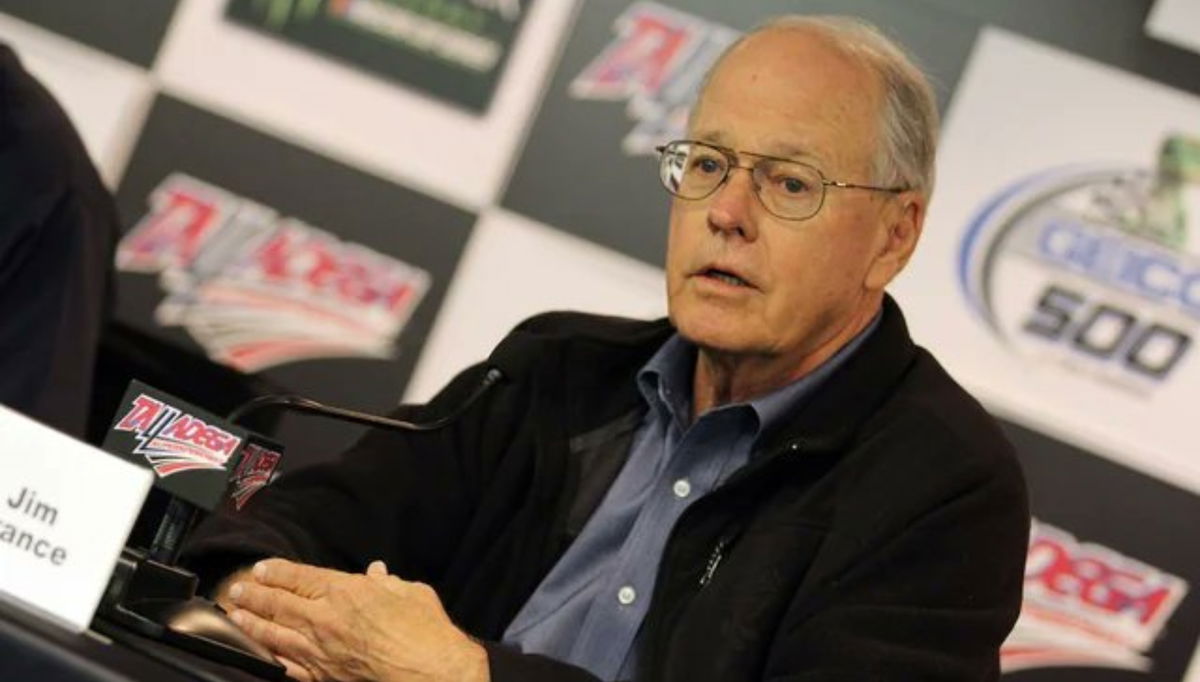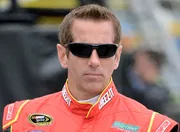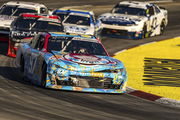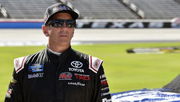
Imago
From Twitter

Imago
From Twitter
The NASCAR charter dispute has been a firestorm since 23XI Racing, co-owned by Michael Jordan and Denny Hamlin, and Front Row Motorsports refused to sign the 2025 charter agreement, slamming its terms as unfair, especially the release of past legal claims and non-permanent charters. Their October 2024 antitrust lawsuit accused NASCAR of monopolistic practices, sparking a legal brawl. And now, recent filings have only deepened the mystery, suggesting NASCAR may have prepared for scenarios far beyond what’s publicly known.
Watch What’s Trending Now!
A December 2024 injunction briefly secured their chartered status and Stewart-Haas charter purchases, but the Fourth Circuit Court reversed it in June 2025, forcing them to race as “open” teams without guarantees or full financial perks. With the trial set for December 1, 2025, a bombshell filing revealed NASCAR’s “Project Gold Codes,” a secret plan to keep racing if teams are ever to boycott or split.
ADVERTISEMENT
NASCAR’s bold contingency plan
The “Project Gold Codes” revelation came when 23XI Racing and Front Row Motorsports pushed to dismiss NASCAR’s counterclaim, dropping a 32-page internal presentation that outlined how the sanctioning body could survive a team walkout. This wasn’t some half-baked idea, it was a detailed blueprint for NASCAR to build and operate all race cars for 18 months if negotiations collapsed. Spreadsheets spelled out the costs: non-personnel expenses for constructing cars and personnel budgets for staffing teams.
The plan, detailed in Sports Business Journal and The Athletic, shows NASCAR’s readiness to counter a boycott or mass exodus, akin to LIV Golf’s PGA upheaval. It’s a stark reminder of the power struggle at play, with teams demanding permanent charters and bigger TV revenue slices, NASCAR holding firm through 2031 to control costs and maintain leverage.
The filing paints a vivid picture of NASCAR’s doomsday prep. If teams bailed, the series could field its own 40-car grids, covering everything from chassis to crews, to keep races running. The presentation’s depth, cost projections, timelines, and logistics show NASCAR took the threat seriously, especially after 1996’s “F**k the teams” texts surfaced in the lawsuit, hinting at a long-standing willingness to sideline rebels.
ADVERTISEMENT
As part of filing to request NASCAR counterclaim thrown out, 23XI/FRM included NASCAR in-house meeting presentation on working contingency plan if teams boycotted events or left series, including NASCAR owning all cars. It was called “project gold codes.” … Boycott plan (1/5) pic.twitter.com/jQw1xSWOMM
— Bob Pockrass (@bobpockrass) September 13, 2025
Judge Kenneth Bell questioned why NASCAR couldn’t sell inactive charters instead of cutting them, but “Gold Codes” reveals a fallback: reserve six charters for 23XI and FRM pending the trial, with plans to reallocate if needed. With interest from existing teams and new owners, NASCAR’s not bluffing; it’s built a fortress to weather a split and come out stronger.
ADVERTISEMENT
This all ties to the broader charter war. Teams like 23XI argue they’re shortchanged on revenue, while NASCAR’s countered with claims of team collusion for better terms. The overturned injunction cost 23XI and FRM $45 million in combined revenue, forcing them to race as opens in 2025.
Front Row’s Bob Jenkins remains confident the case is winnable, but NASCAR’s counterclaim stands, with the judge eyeing summary judgment. “Project Gold Codes” ups the stakes, showing NASCAR’s ready to go it alone if pushed, a move that could reshape the sport. As the December trial nears, the garage is buzzing, with teams wondering if this could fracture NASCAR’s unity or force a new revenue model.
The timing couldn’t be worse for the playoff contenders, with Bristol’s high-stakes cutoff amplifying the off-track drama. “Gold Codes” isn’t just a plan; it’s a signal NASCAR’s prepared to play hardball, controlling the narrative and the cars if teams push too far.
ADVERTISEMENT
Top Stories
Another Almost Fatal Disaster Surfaces From Statesville Airport Amidst Ongoing Greg Biffle’s Crash Investigation

The Retirement Question – What Happens if Kyle Busch Fails in 2026?

What Is NASCAR’s 5-Strike Rule That Could Change Its Future? Check All Details Here

Dale Jr’s CARS Tour’s Powerful Greg Biffle Tribute Has NASCAR Fans Making One Emotional Demand

Horrific Aerial Footage of Greg Biffle’s Fatal Crash Emerges Leaving NASCAR Community in Tears

Denny Hamlin’s shocking retirement bombshell
Amid this legal chaos, Denny Hamlin, a key figure in the 23XI lawsuit, dropped a bombshell that he’s retiring after his 2027 Joe Gibbs Racing contract, just two years away. The 44-year-old, fresh off five 2025 wins including Gateway’s Enjoy Illinois 300, broke the news in a raw video. “I’ve been fortunate to achieve what I have, and while it’s a tough decision, I believe it’s time to pass the torch,” he said, reflecting on 59 career wins, three Daytona 500s, and five Championship 4 runs without a title.
His words hit hard, “I’m just not going to leave this sport on my deathbed, you know, just leaking oil, running in the back of the pack. I have way too much pride for that. I’m way too cocky for that. There’s just no way. I want to be able to win my last race.” His Gateway presser doubled down, emphasizing racing at his peak, “To do that, I’m going to have to retire when I’m racing like this.”
ADVERTISEMENT
Hamlin’s exit plan ties directly to the lawsuit’s stakes. As 23XI’s co-owner, he’s fighting NASCAR’s system while planning his farewell, adding emotional weight to his 2025 title chase. With Bristol’s Night Race deciding the Round of 16, his five wins and 59 career victories, tying Kevin Harvick for 11th all-time, make him a favorite, but the charter drama looms large.
His retirement news fuels speculation: will he go out with a championship, or will “Project Gold Codes” and the lawsuit overshadow his final laps? For now, Hamlin’s vowed to race hard, leaving fans eager to see how he cements his legacy in a sport he’s helped shape, both on the track and in the courtroom.
ADVERTISEMENT
ADVERTISEMENT
ADVERTISEMENT

